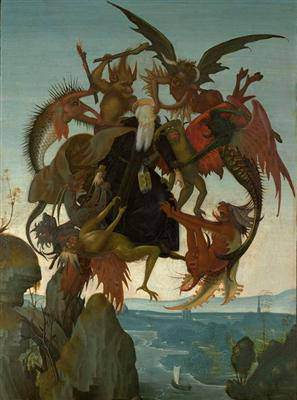
Paul Gauguin – Where Do We Come From? What Are We? Where Are We Going?
Paul Gauguin’s masterpiece travel to Nagoya
Paul Gauguin’s masterpiece, D’où venons-nous? Que sommes-nous? Où allons-nous? (Where Do We Come From? What Are We? Where Are We Going?) (1897–98, MFA), will leave its home at the Museum of Fine Arts, Boston (MFA), this spring to make its first trip to Asia
]]>
April 9, 2009 – The occasion is the celebration of the 10th anniversary of the MFA’s sister museum, the Nagoya/Boston Museum of Fine Arts (N/BMFA), which opened to the public on April 17, 1999. The seminal work by renowned Post-Impressionist artist Paul Gauguin (1848–1903) has rarely traveled since it was purchased by the Museum in 1936. It serves as the centerpiece of Gauguin, an exhibition of 40 works organized by the MFA in collaboration with the N/BMFA, which will be on view from April 18–June 21 in Nagoya, after which it will travel to the National Museum of Modern Art in Tokyo (MOMAT/Tokyo), where it will be on view from July 3–September 23. The exhibition, sponsored at both venues by NHK (Japan Broadcasting Corporation), will feature 20 of the rarest and most beautiful paintings, prints, and sculptural reliefs from the MFA’s extensive collection of works by Gauguin, as well as 20 loans from Japanese museums.
Gauguin considered D’où venons-nous? Que sommes-nous? Où allons-nous? to be his final testament, the culmination of his prolific artistic career. Richly detailed in vibrant colors, the monumental canvas (4.5 x 12.25 feet) documents his passionate embrace of the natural world. Gauguin’s letters to associates back in France suggest that the fresco-like painting should be read from right to left, with three major figure groups pondering the questions posed in the title, written in French in the upper left-hand corner of the painting. The three women and sleeping infant represent the beginning of life, the central group symbolizes the daily existence of young adulthood, and in the final group, according to the artist, the blue idol to the left of center represents ―the Beyond,‖ while an old woman ―approaching death appears reconciled and resigned to her thoughts.‖ The painting arose from a time of great personal turmoil for Gauguin, beginning in 1897 as his health and mental state deteriorated, continuing through 1898 as he recovered from a failed suicide attempt. Though living in paradise, Gauguin was filled with self-doubt—fueled by lack of recognition and recompense—which plagued the artist until his 1903 death from syphilis in the Marquesas Islands.
Follow us on:


